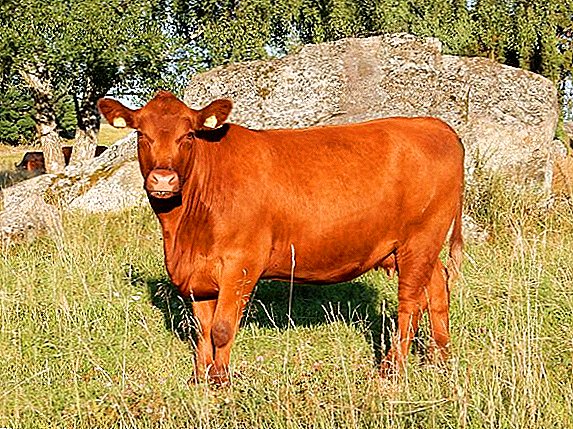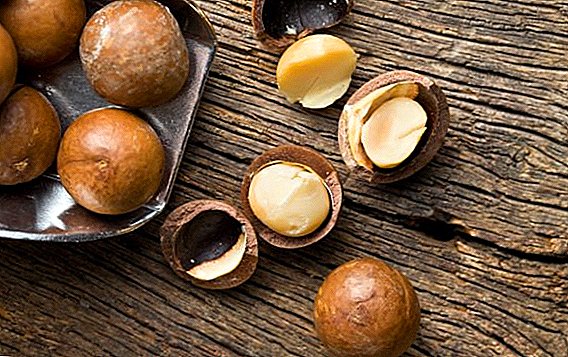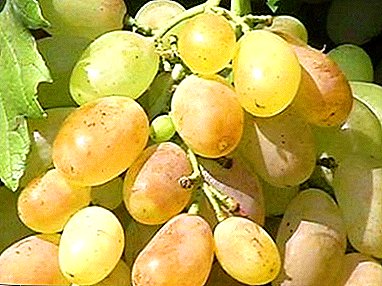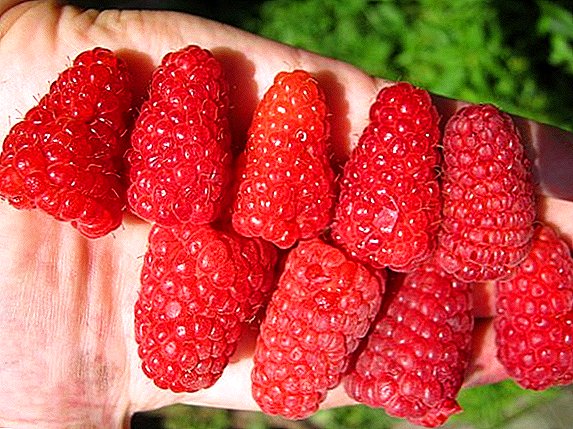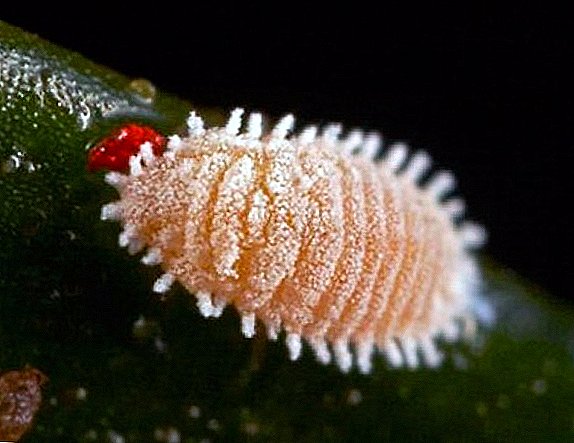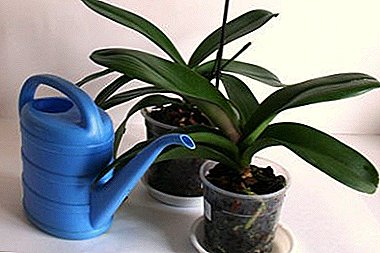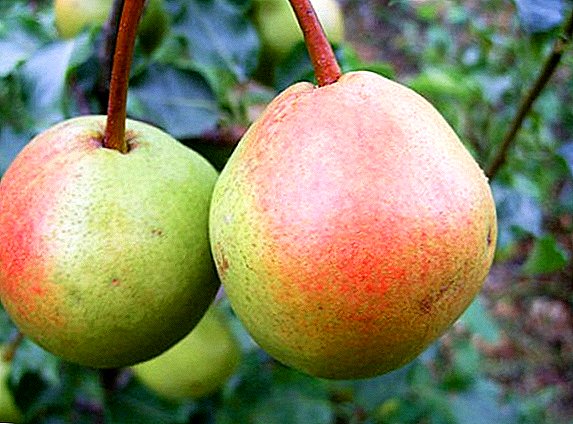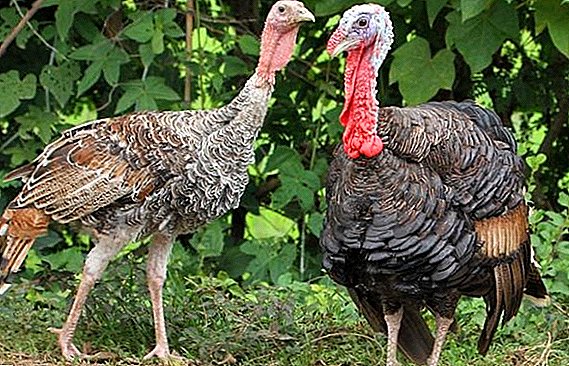 Usually turkeys are grown to produce tasty and dietary meat. In just 6 months, these birds reach a very impressive size and weight of 6-8 kg. Turkey meat is famous for the fact that it does not cause allergic reactions, contains the minimum amount of fat, it is recommended for baby feeding. However, these birds value not only meat, but also eggs: they are a delicacy and are on the 3rd place in nutritional value after quail eggs and guinea fowls, contain a large amount of protein and amino acids. But farmers still prefer to leave eggs for breeding offspring, because turkeys are excellent layers and mothers. All about how turkeys rush, read in our material.
Usually turkeys are grown to produce tasty and dietary meat. In just 6 months, these birds reach a very impressive size and weight of 6-8 kg. Turkey meat is famous for the fact that it does not cause allergic reactions, contains the minimum amount of fat, it is recommended for baby feeding. However, these birds value not only meat, but also eggs: they are a delicacy and are on the 3rd place in nutritional value after quail eggs and guinea fowls, contain a large amount of protein and amino acids. But farmers still prefer to leave eggs for breeding offspring, because turkeys are excellent layers and mothers. All about how turkeys rush, read in our material.
At what age do turkeys begin to trot
Female turkeys begin to race at 7-9 months of age. The beginning of the process depends on the breed and type of turkey, the conditions of detention, the climate in which the bird lives, heredity.  Thus, representatives of small breeds start egg-laying at an earlier age - 28-30 weeks, large breeds - at 32-36 weeks. Although some species may lay eggs as early as 6 months after birth.
Thus, representatives of small breeds start egg-laying at an earlier age - 28-30 weeks, large breeds - at 32-36 weeks. Although some species may lay eggs as early as 6 months after birth.
Did you know? Scientists have not yet been able to establish the purpose of growth on the beak of a turkey. It is noticed that the bird can regulate its length - to decrease in a calm state, and to lengthen in an excited state.
Egg laying takes place in spring and autumn every day until 12 o'clock in the afternoon or every other day. During the molting period, the egg production level significantly decreases. In March-April, the turkey at home rushes for 3 weeks.
On an industrial scale, subject to the necessary conditions, egg-laying can be achieved at any time of the year throughout the month. When laying in the spring, the bird takes more eggs than in the autumn. 
Certain signs will indicate that the turkey has reached its willingness to lay eggs:
- So, the bird that rushes, usually hides from people and relatives.
- She prefers not to go for walks, stay in the house or hide in secluded places.
- Also in her beak more often you can see dry branches, feathers - the building material for the nest.
If the house is not heated, then soon after warming and when the temperature is above +5 degrees, the first eggs should be expected.
It will be useful for you to learn, than turkey eggs are useful and how to use them.
Can a turkey go without a turkey
As is known, the chicken does not need a rooster in order to carry eggs - it can easily do without him, but at the same time eggs can only be used as food, because they will be unfertilized.
In turkeys, the situation is similar: a turkey is necessarily necessary to produce offspring. 10 turkeys will require 1 turkey.  An interesting feature of birds is that male sperm can linger in the female genital tract for some time and fertilize eggs. So, one pairing of a turkey is enough to take down fertilized eggs for 62-72 days.
An interesting feature of birds is that male sperm can linger in the female genital tract for some time and fertilize eggs. So, one pairing of a turkey is enough to take down fertilized eggs for 62-72 days.
Important! Before the onset of the mating season, care should be taken to trim the claws of the males. Often during mating, they inflict deep wounds on females, which is bad for further productivity.
Turkey poults appear 28-30 days after the start of incubation.
How many eggs does a turkey bear per year?
The average annual egg production of turkey is 50-90 pieces, but it all depends on the breed. For example, from the North Caucasian turkeys you can expect about 75 units per season or 120 units per year. Record recordrs who managed to demolish 220 pieces per year were recorded.
You will be interested to learn about the peculiarities of growing domesticated turkey breeds such as black Tikhoretskaya, Uzbek fawn, Victoria, Grade Maker, Canadian, Hybrid Converter.
Each egg weighs 70-90 g. The shell is cream with dark specks. The weight of the egg depends on the weight, breed and age of the hen. 
How many years do turkeys rush
Turkeys are ranked among the best broods among all poultry; therefore, these qualities are used by enterprising poultry farmers, who put eggs from other poultry under them.
They rush annually, and by the third year of life there are more and more eggs. Starting from the age of 3, the egg production level gradually decreases, first by 40%, then (by four years) by 60%.
Important! The level and duration of egg-laying will depend on several factors: the breed, conditions of detention (cleanliness, humidity, lighting), care, daily diet.
Why do not rush turkeys
Those farmers who are already confronted with the content of turkeys, know firsthand about their capriciousness and tenderness. In order to maximize the egg production rate of a bird, special conditions should be created for it, to provide high-quality care and nutrition. 
If a turkey has a low egg production level or it disappears altogether, there may be several reasons:
- Oviposition is not worth waiting for during the molt - this is the period when all the forces of the body go to update the feathers, and the laying of eggs is not enough. If after the end of this period, the egg production has recovered, then the bird is all right.
- A small number of eggs can be observed due to insufficient lighting in the house. It is recommended to set the daylight hours to at least 10 hours. To do this, at least one window must be in the house, plus additional lighting, preferably fluorescent lamps. The best egg production is observed at 12-14-hour light day.
- The house may be too cold. In order for the bird to feel comfortable, in the place where the nests are installed, the temperature should be at least +10 degrees.
- Dampness also has a bad effect on egg production. It is necessary to check the condition of the house, the presence of drafts in it, the condition of the litter, the work of ventilation. The ventilation system must be of high quality in order to remove excess moisture in time.
- Perhaps the birds do not like the location of the nests - they should be located in a secluded place where the hen can retire and no one will disturb her. If this place is constantly noisy, then it can frighten the turkey and prevent it from rushing. One nest should fall on 5-6 hens.
- If the birds have already begun to rush, then you should not move the nests to another place. It can also disrupt the normal course of the egg-laying.
- Another reason is the lack of vitamins and minerals. In this case, you should review the diet of birds and make it balanced, with the recommended vitamin-mineral composition, or introduce special additives.
- Diseases are also satellites for a fall in egg production. If the hen has suddenly become much less likely to sit in the nest, check her state of health, watch her for a while. For suspicious signs of lethargy, decreased activity, deterioration of the type of feathers, depression, consult a veterinarian.
- It is necessary to try so that the hens are subjected to stress as little as possible. Nervous shocks adversely affect the number of eggs brought.
- In the house should not be closely. It is necessary to check whether the density of planting turkeys in the room corresponds to the recommended rate of 3.6 birds weighing 8 kg per square meter m and 5 individuals weighing 6 kg per 1 square. m
Find out also what is useful and how calories turkey, as well as the benefits and harm of turkey liver.
 Thus, if you learn how to grow turkeys properly, this occupation can turn into a fairly profitable business. Their meat is valued for low calorie, hypoallergenic and excellent taste. Eggs are a wholesome and expensive delicacy.
Thus, if you learn how to grow turkeys properly, this occupation can turn into a fairly profitable business. Their meat is valued for low calorie, hypoallergenic and excellent taste. Eggs are a wholesome and expensive delicacy.Did you know? Turkey became the first dish that was eaten by the first man who stepped on the surface of the moon. The meat of this bird, packed in a vacuum package, was eaten by astronaut Neil Armstrong, having visited the Earth satellite in 1969.
Turkeys are carried daily in spring and autumn, their eggs are large. The onset, duration and level of egg production depend on the breed of bird, conditions of housing, quality of care and feed.


